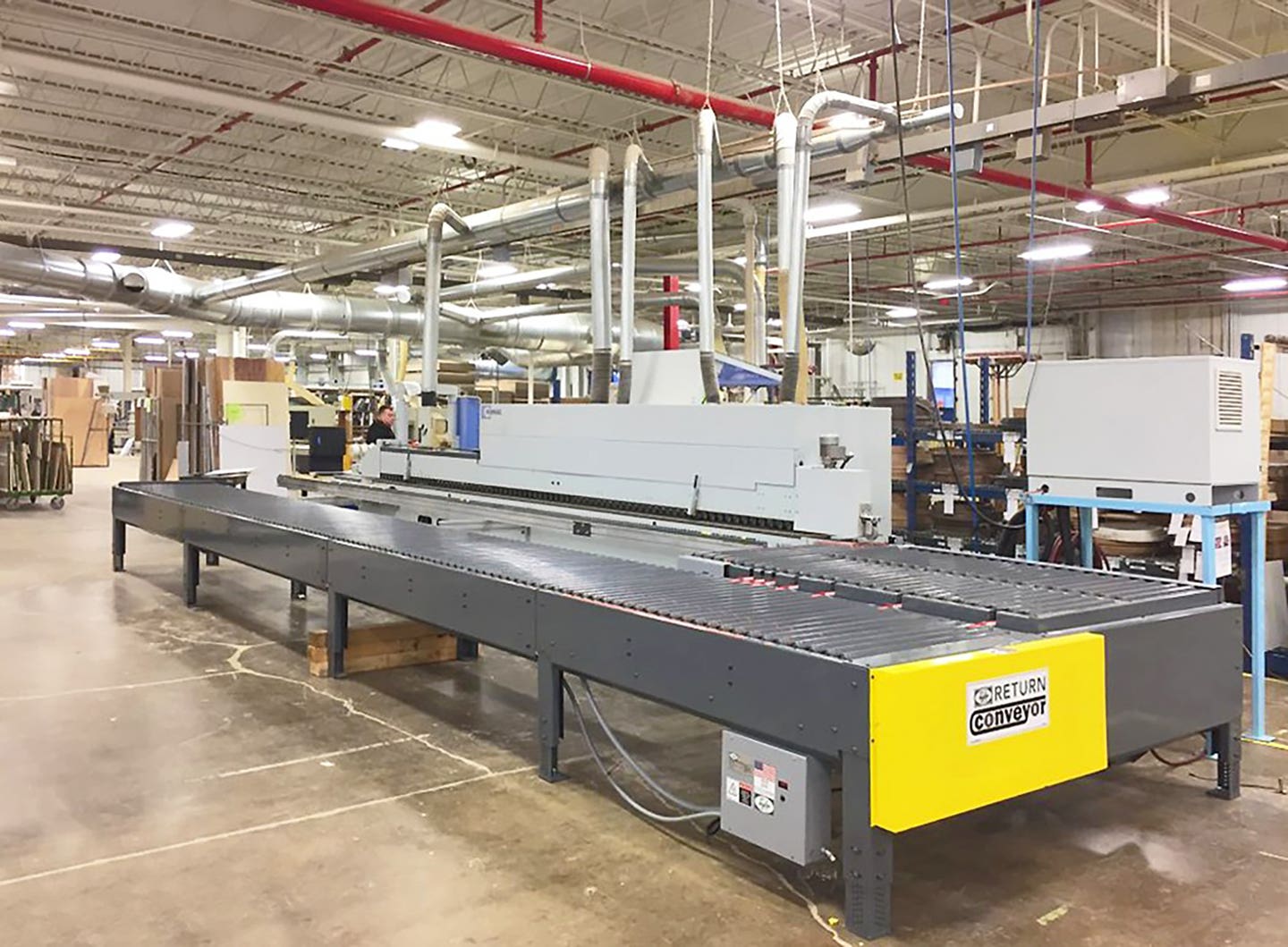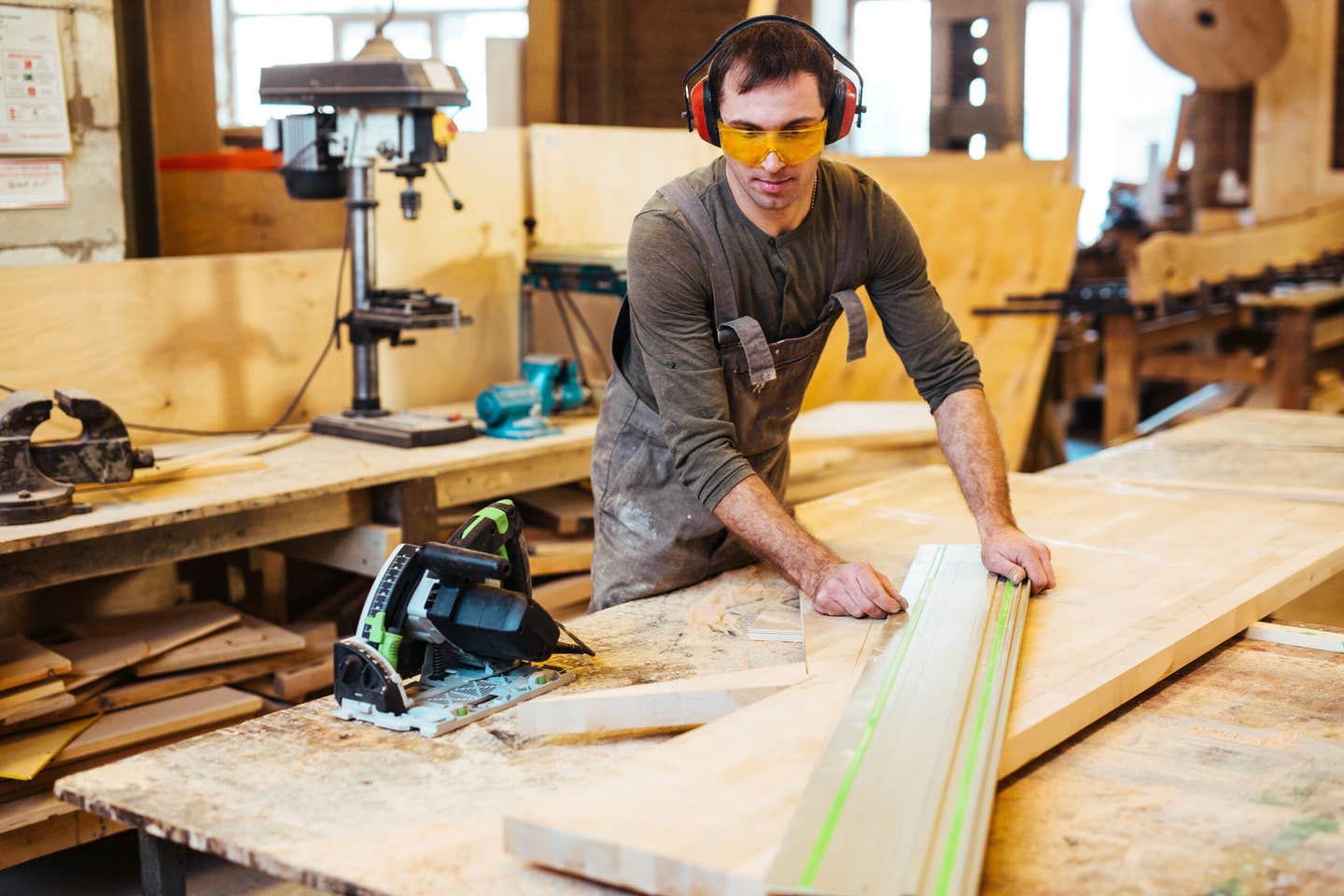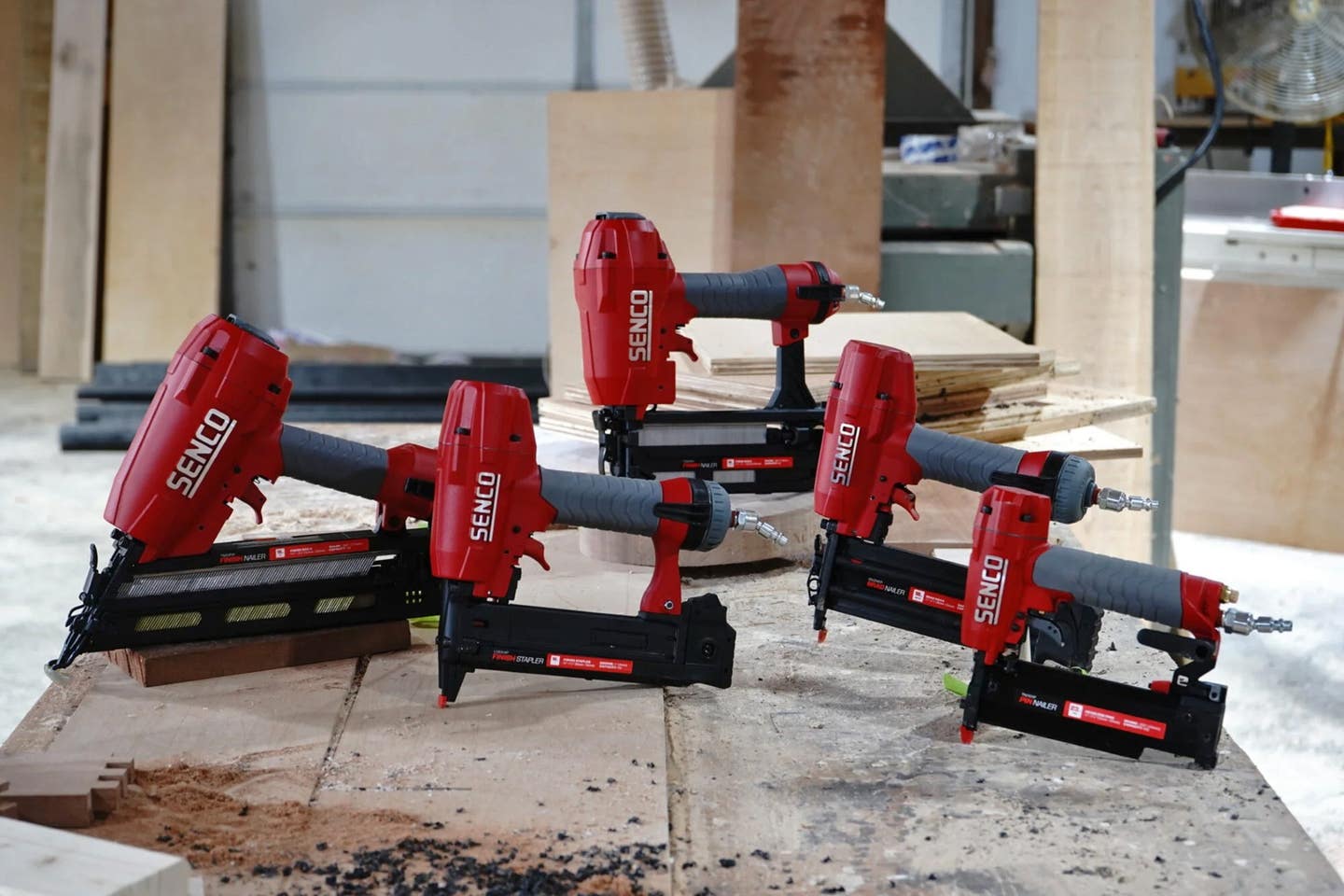Perfect strangers
Find your niche. That’s the mantra to which every business aspires. And a couple of woodworkers out West seem to have done just that. Bill Pridgeon and Denny Zimmerman only…
Find your niche. That’s the mantra to which every business aspires. And a couple of woodworkers out West seem to have done just that. Bill Pridgeon and Denny Zimmerman only met each other in April, but they have been doing remarkably similar work on opposite sides of a state line for about seven years.
That’s when Pridgeon retired from Wyoming’s oil fields to a secluded cabin in the gentle valleys west of South Dakota’s ancient Black Hills. He’s just a mile or two from the state line, which allows him to enjoy low Wyoming property taxes. The Black Hills here are mere drumlins, laced with tiny streams that funnel snowmelt to the Missouri. The sometimes-harsh climate — high winds and intermittent drought — has produced an abundance of burls in the ash, walnut, cottonwood and scrub oak that cling to the valley floors and the pine trees that scale the surrounding hillsides.
About 10 miles east of Pridgeon’s cabin, there’s a high plain located just across the state line that offers views for 50 miles in every direction. Here, Zimmerman, a retired mining executive, occasionally shatters the silence of his subdivision with the roar of a chainsaw. Zimmerman took up woodworking about the time that Pridgeon started harvesting burls. Soon after retiring, Zimmerman enrolled in one-on-one furniture-building classes and eventually tried his hand at turning, too. But he has a passion for the outdoors and, on frequent fishing trips throughout the Hills he began to notice the preponderance of burls. What was most interesting was that they were not confined to one altitude, one area or even one species. Out on the plains just north of the Black Hills, the riverbeds are lined with white oak and cottonwood, some of which produce burls the size of beer kegs. He began to wonder how he could carve them into bowls.
The harvest
As a lifelong resident of this sparsely populated area, Zimmerman knows just about every landowner for miles around, so he asked their permission to harvest burls from standing dead trees. He won’t take a chainsaw to a living one, even though foresters have assured him that the trauma won’t kill the tree. There’s simply no need: he can harvest all he wants without going down that road.
Back home in his one-stall garage workshop, he begins the process of hollowing. Much of the work actually takes place outside, weather permitting. He uses a combination of tools. It begins with a chainsaw, which he uses to remove as much of the waste as possible. He then switches to an old-fashioned hammer and a set of very sharp wood chisels to remove excess material between the scored kerfs that were left by the saw. From there, he switches to a side grinder equipped with one of several grits of Holey Galahad 4” carving disks (available through www.kvwoodcarvingsupplies.com). Designed for fast removal, they have several windows cut into them, so a woodworker doesn’t have to stop and lift the grinder and check progress: it’s always visible.
The final step is a seemingly endless regimen of sanding. Given the grain directions inside a burl, there’s no simple way to attack scratches. It’s a matter of slapping one grit after another on the orbital sander, working all the way down from 40 to 400. There are no short cuts.
The finish on the bowls is an oil-based polyurethane laid down in numerous thin coats. These large, porous vessels will never be used for cereal or salad. Their primary function is as art — a melding of natural form and the restrictive organization that men can force upon it. They are sometimes put to work holding large volumes of fruit or used for knitting or to hold TV remotes. But, for the most part, they are set upon a pedestal, well lit and admired for their tamed ferocity. Most retail in a range from roughly $150 to about $400.
Creative uses
Ten miles west of Zimmerman’s shop, Pridgeon has been building a lot of pine burl beds lately. His acreage is densely wooded and he, too, is an avid outdoorsman. Fishing and hunting trips are only somewhat dedicated to filling the freezer: one eye is always on the surrounding flora, locating burls that he can come back to later and haul to the shop. Most of Pridgeon’s burls are pine, although he occasionally finds some interesting juniper. There are more than 50 species of this member of the cypress family and many of them are native to the American West. They tend to grow low and lean, often in places where wind eliminates their competition. The wood is similar to a highly figured version of aromatic red cedar. Pridgeon often uses this colorful, knotty wood as milled boards to complement the graceful drama of pine burls. He will incorporate it, for example, as shelves supported by burled log legs.
Webster defines a burl as “a hard, woody, often flattened hemispherical outgrowth on a tree.” There are various schools of thought on what causes them, but there is general agreement that they are abnormal growth. Possible causes include insect- or weather-related damage, fungi, genetics and the chemical composition of the soil. Burls are one result of the tree repairing itself after suffering some kind of trauma, which in many cases can be physical (such as storm damage). Quite often, the biggest burls are underground and these are sometimes visible where the root system meets the trunk.
Pridgeon makes a lot of burl beds. He’s branching into other types of furniture (pun intended) and he has also produced a lot of railings, shelves and lamps. But he’s mostly known for beds that retail in the $3,500 range. Half the process takes place before the wood ever enters his shop. Finding, harvesting, transporting, sawing and stripping the logs that host the burls all takes place outdoors. While Zimmerman works only with the actual burl, Pridgeon’s forte is creating art by using the burl along with its host (a log or limb) to create work that combines several pieces of wood. Much of his joinery is standard round mortise and tenon, the type used in most log furniture. But he also uses screws and then hides their heads with colored putty that he shades to match. He then works the putty with the sharp point of a nail or an awl to create blended and virtually invisible texture. Among their folds and crevices, burls offer myriad places to naturally hide screw heads without the need for putty.
Here, there and everywhere
Walking up to Pridgeon’s cabin is an interesting experience. The entire front façade is draped in decking and the stair rails and newel posts are all fashioned from burled logs and limbs. A couple of welcoming carriage lamps at the base of the stairs are supported by a log post that’s capped by a burl. A huge burl anchors a post to the right of the door, while a host of smaller ones hug the spindles of the railing, looking like so many beads on an abacus. The irregular rails give an impression of whimsy: at first glance, one thinks of hobbits and Hogwarts. But a second look reveals that the construction is solid, reliable and beautifully executed.
The shop is new, so Pridgeon hasn’t had a chance yet to decorate it with his own personal flair. The exterior is simple log siding: not a burl in evidence. But a few feet away, there’s a pile of weathering, drying dark-colored burls, many showing golden sap where the bark has peeled. These he allows to age naturally. When needed, they are taken into the shop and sanded partially through the weathering, allowing a small amount of the gray to remain as a texturing contrast to the freshly revealed, clear fibers below.
Everywhere one looks in the shop, burls abound. One pile in particular draws attention: it looks like limbs — femurs and tibias and kneecaps all lined up and waiting their turn in the surgery.
On this particular day, Zimmerman and Pridgeon have just met for the first time. They immediately hit it off, sharing interests in hunting, fishing, the Western way of life, retirement from similar industries, several mutual acquaintances and, of course, a passion for burls. They pour water over a slab of pine burl and get way too excited over the figure that is revealed. It’s only wood, guys.
Up on the porch is a big box covered in pine log siding with wrought-iron hardware and burl corners. There are four found horseshoes decorating the top. Lift the lid (the handle is a shed deer antler) and inside is a plastic, foam-lined cooler. Taking a Chinese import made of oil and dressing it in native wood makes a statement about the way these guys live, what they remember and how they want things to be.
To see more work by bowl maker Dennis Zimmerman, visit him online at www.denniszimmermanburlsculptor.com. If you’d like to know more about Bill Pridgeon’s burl beds and furniture, he can be reached at 307-283-1537.
This article originally appeared in the July 2013 issue.







